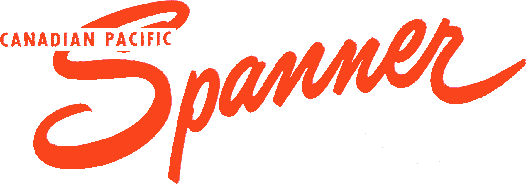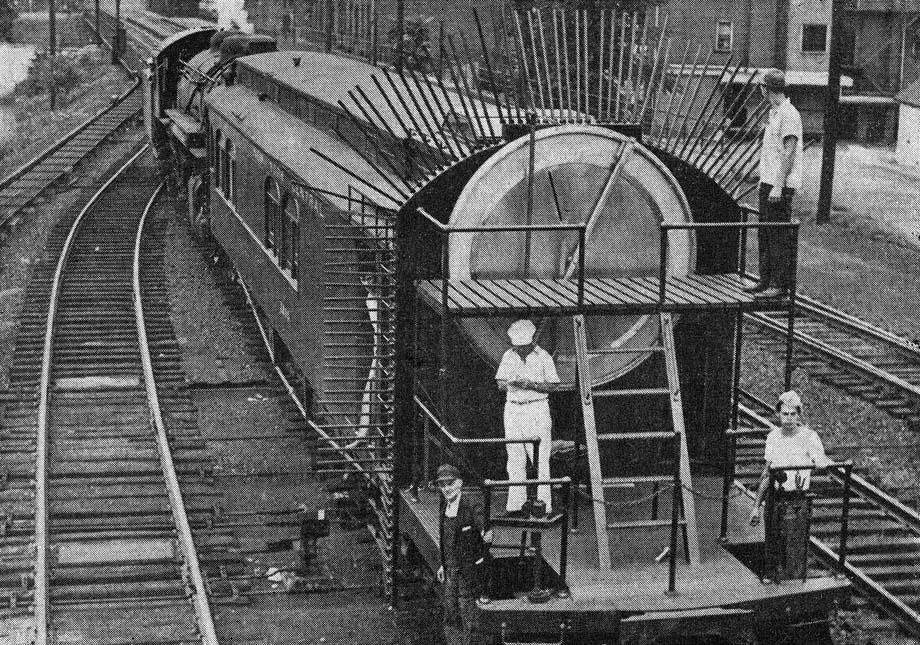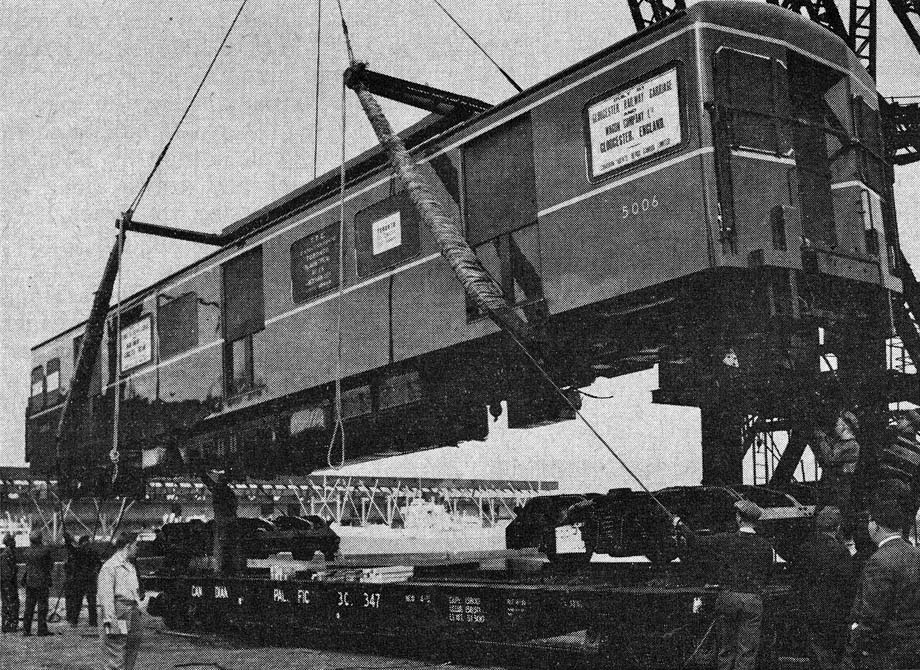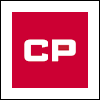

The Clearance Car
Will the shipment clear all obstructions along the route? This is the question which always has to be
considered before an over-size or projecting shipment starts to roll.
The answer is found in clearance records compiled by the railway engineers. The modern method of measuring clearance is by means of the clearance car pictured here. The car, is pushed by a locomotive, travels slowly over a railway line, and by means of a battery of adjustable "feelers", or "cat's whiskers", it measures accurately the clearance of tunnels, overhead bridges, truss bridges, retaining walls, water columns, cut banks, and other potential obstructions.
Only by thus obtaining an accurate record to a fraction of an inch of clearance above and alongside the railroad can the transportation department tell definitely whether any loaded car can travel over the route to its destination, or whether, because the load or its projections cannot pass some point on the way, it will have to be sent over another route.
The feelers of the clearance car are adjusted just before the car is pushed into the tunnel, under the bridge, or past the wall or other obstruction. As the car moves slowly past, the obstruction pushes the feelers back so that their changed position gives an exact profile of the obstruction. This profile is transferred to paper by the use of pantographs. A man outside the car moves the arm of a large pantograph to meet the tip of each feeler. As the arm is extended or retracted to meet each successive feeler, the movement is transmitted, first to an arm moving on a large dial outside the car, and then, in reduced scale, to one moving inside on a smaller dial. The clearances are recorded on measured charts as the car moves along.
In the office of the maintenance of way department or the clearance engineer's office the charts are studied and translated into understandable terms, and the record shows what will and what will not clear the obstruction. Sometimes structural changes or alterations in roadbed are made as a result of the findings.
On Northern railroad clearance cars are not usually operated during the winter months because snow and ice formations would make it impossible to obtain accurate measurements. The busy season for clearance car operations is from April through October.
Changed conditions because of new construction, or alterations, or because some prank of nature might result
in a change in rail elevation in a tunnel or bridge. Or a severe winter might alter the earth's contour
slightly. The difference may not amount to even an inch, but it might be the space which would determine whether
a shipment could or could not move over the road. That's why the clearance car, providing rapid and accurate
measurements, is an important part of the railroad's work equipment.

 Railway Limited and is reprinted here with their permission. All photographs, logos, and
trademarks are the property of the Canadian Pacific Railway Company.
Railway Limited and is reprinted here with their permission. All photographs, logos, and
trademarks are the property of the Canadian Pacific Railway Company.
